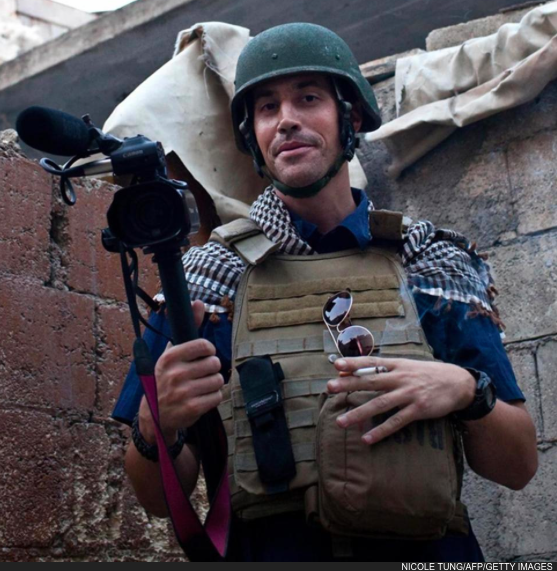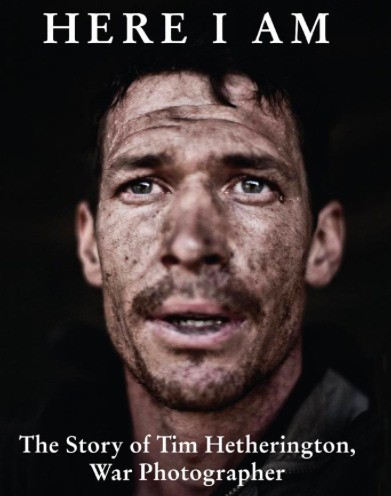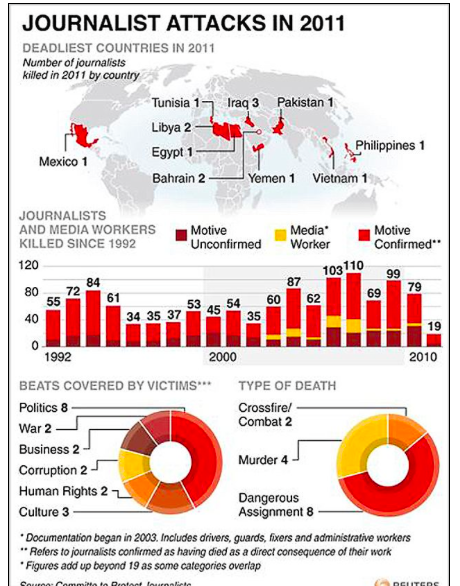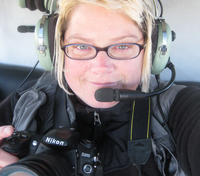
The day's copy of The West Australian lay on her back seat. I stared at it a bit then picked it up.
The first page I turned had this image of U.S. journalist James Foley on it.
I can't tell you how long I stared at this image, at his eyes, but it's a long 3-hour drive from Southern Cross where the desert begins out to this gold mining town.
I've seen a lot of photos since James Foley was taken into the desert and beheaded by the Islamic State of Iraq and Greater Syria (ISIS). This is the one that made me stare at it as our engine hummed along the highway as I am following my own dream of sharing a story of tribes with disappearing languages.
First, I want to say that this image is captivating because of what Nicole Tung captured: James Foley's essence. He is at once disarming and a bit haunted from what he's surely seen. Like the photo of Tim Hetherington, who was killed by a mortar attack covering the crisis in Libya.

James Foley was kidnapped and held more than a year by ISIS, along with ... 18 other prisoners, including U.S. journalist Steven Sotloff.
The Australian newspaper story carefully detailed how Foley wrote a letter home to his family; a friend memorized it beause their letters were constantly confiscated.
When the prisoner was freed, he recited the letter to Foley's parents.
“Eighteen of us have been held together in one cell, which has helped me. We have had each other to have endless long conversations about movies, trivia, sports. I have had weak and strong days … We try to encourage each other and share strength."
I imagine him in there, what he sacrificed — not only in death but on a daily basis — to follow his dream and to do right by the world.
I can tell you without doubt that no photojournalist who embarks on projects, even as cordial as mine, where I'm invited, does it for any other reason. It's a drive and a mission to share the story that might not otherwise be told.
Foley was not getting rich; he had no hidden agenda that people like to say the media has ... he silently took the photos of what is happening in the world that most people likely would rather not see. No one knew his name before he was executed.
People like to find a positive when good people meet tragic ends: In his death at least we are more aware of ... at least we made this impact ...
Journalists like to tell it like it is. So here it is. There's no positive to this. A radical group kidnaps and tortures a journalist who is there to tell the a part of the story — which includes their story — and it's only tragic because nothing can change. There's a scholarship/grant set up in Hetherington's memory and the first recipient has amazing, brave work.
But it looks like even more journalists are killed trying to cover the world every year. At least it seems that way. I found this graph from 2011 stats and was surprised at how many there are, even in the 1990s.

I feel like there was a time, not too too long ago, when journalists had a pass. The world understood that journalists were there to cover the story, and there existed an invisible shield. Many were killed in mortar attacks or as a result of being on a front line or amidst guerilla squads, but people were not deliberately targeting them. Murdering them. And making them news.
That has changed.
As I write this, and am looking for Hetherington's portrait I posted, I see ISIS has beheaded Sotloff. News today.
For time immemorial — since the first guy put ink to print press and banged out a story of something that happened in their community — journalists have told the story of the world.
Humanity.
Without the Hetheringtons and the Sotloffs and the Foleys, and all the men and women from all over the world covering their small towns or global crises, the world would be a bleak, blank place where we don't have the benefit of learning about the past or even know the Holocaust happened. Pol Pot. The New Orleans hurricane and flooding. Ferguson.
Name it. Critique it from your easy chair or your computer or from the front line itself; without journalists, there is nothing to debate.
We simply would not know.
And that's the real tragedy.
We have lost Foley; but it's more than one man. One camera.
His collection of photos and the life he witnessed before him and was snuffed out in front of him are the backbones of history and a vital contribution to how we will come to understand impact of these times. In everyday life or the confused trauma of conflict, these images make the world, in all its greatness, banality and brutality, a little smaller.
The desire to stifle the story baffles me and yanks at my gut when I stare at his face, before he was gone.
*I wanted to share a collection of Foley's photos here, and after 35 minutes Internet searching, I find only images of him and of his beheading, or his haunted-looking parents. With this death, his contributions are temporarily invisible.
*Here is a link to Tim Hetherington's collectionshttp://www.magnumphotos.com/Catalogue/Tim-Hetherington.html via Magnum.
